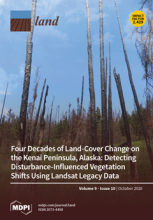Land Library Search
Through our robust search engine, you can search for any item of the over 73,000 highly curated resources in the Land Library.
If you would like to find an overview of what is possible, feel free to peruse the Search Guide.
/ library resources
Showing items 1 through 9 of 115.Woodland expansion on a significant scale is widely seen to be critical if governments are to achieve their net zero greenhouse gas ambitions. The United Kingdom government is committed to expanding tree cover from 13% to at least 17% in order to achieve net zero by 2050.
Although renewable energy holds great promise in mitigating climate change, there are socioeconomic and ecological tradeoffs related to each form of renewable energy.
The paper presents a conceptual model for the disposition of state agricultural land. The model is made as an extension of the Croatian Land Administration Domain Model (LADM) country profile.
Environmental services of biodiversity, clean water, etc., have been considered byproducts of farming and grazing, but population pressures and a move from rural to peri-urban areas are changing land use practices, reducing these services and increasing land degradation.
There is growing evidence that exposure to nature increases human well-being, including in urban areas. However, relatively few studies have linked subjective satisfaction to objective features of the environment.
In a context of a rapidly changing livability of towns and countryside, climate change and biodiversity decrease, this paper introduces a landscape-based planning approach to regional spatial policy challenges allowing a regime shift towards a future land system resilient to external pressures.
In an era of global warming, long-standing challenges for rural populations, including land inequality, poverty and food insecurity, risk being exacerbated by the effects of climate change.
Insects, the most diverse and abundant animal species on the planet, are critical in providing numerous ecosystem services which are significant to the United Nation’s Sustainable Development Goals (UN-SDGs).
Monitoring of irrigated land cover is important for both resource managers and farmers. An operational approach is presented to use the satellite-derived surface temperature and vegetation cover in order to distinguish between irrigated and non-irrigated land.



